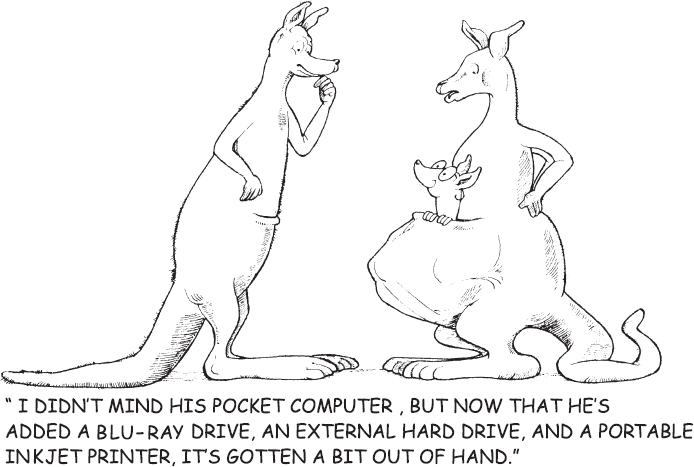CHAPTER 10
COMPUTER PERIPHERALS

David H. Ahl, Creative Computing, Morristown, NJ
10.0 INTRODUCTION
A typical laptop or desktop computer system consists of a CPU; memory; a hard disk and/or solid-state drive (SSD); a keyboard; a mouse or touchpad or touch screen; wireless and wired network interfaces, perhaps with included Bluetooth capability; both input and output sound and video system components; sometimes a DVD read–write drive; and, probably, a display screen; plus some combination of USB, DisplayPort, HDMI, and, perhaps, SD card, ports for connections to an external monitor and other additional I/O components. Additional available components include scanners of various types, printers, TV tuners, and external disk drives.
Tablets and smartphones add various gadgets for mobile use: accelerometers, gyroscopes, global positioning system (GPS) components, light sensors, compasses, as well as cellular technology and, perhaps, near-field communication technology to the mix. Internal to every computer or computer-based device there is also a source of power—a battery or a power supply that converts wall plug power into voltages suitable for powering a computer.
All the items mentioned, except for the CPU, memory, and power source, are considered peripheral (that is, external) to the main processing function of the computer itself and are known, therefore, as peripherals. Some of ...
Get The Architecture of Computer Hardware, Systems Software, & Networking: An Information Technology Approach, 5th Edition now with the O’Reilly learning platform.
O’Reilly members experience books, live events, courses curated by job role, and more from O’Reilly and nearly 200 top publishers.

